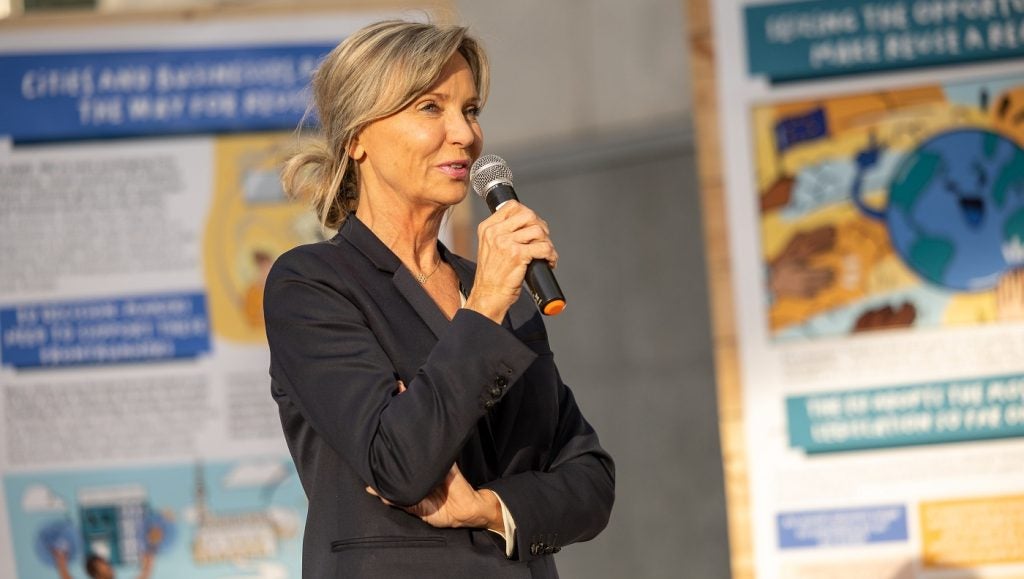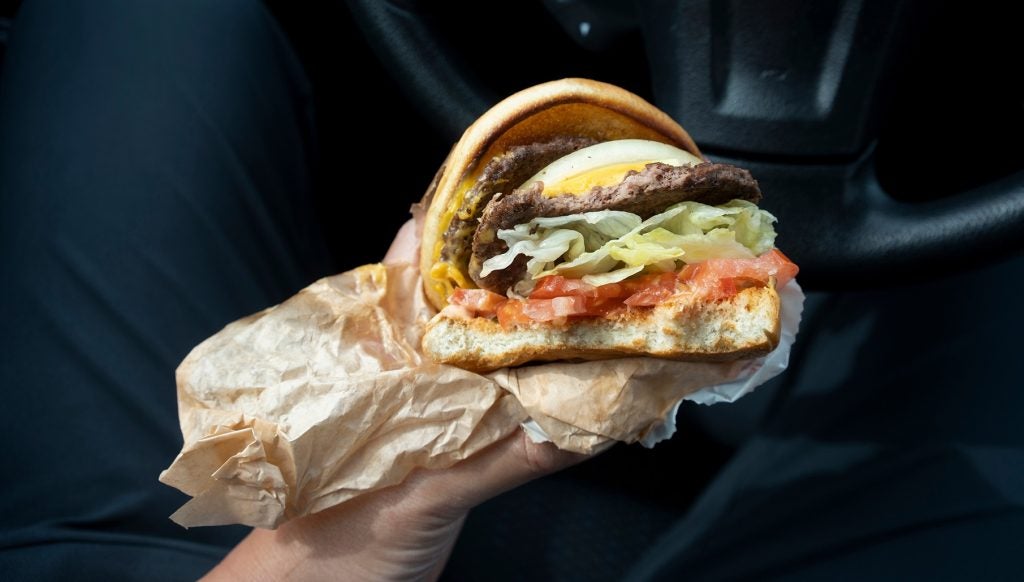
Regulators worldwide are tightening their guidance – and rules – on the use of per- and polyfluoroalkyl substances (PFAS) in food packaging, prompting food manufacturers and their suppliers to develop alternatives to a non-stick chemical used in various types of packaging.
Increasing numbers of studies highlighting an association between PFAS and environmental and health hazards, including cancer and high blood pressure, have pushed regulators to act. PFAS has been dubbed ‘forever chemicals’, as once in the environment they do not break down.
In July, for example, a study said large quantities of PFAS have been found in humans consuming white rice, eggs, red meat, seafood and coffee.
Regulatory action
Amid the concern, measures blocking their intentional use in food packaging have emerged. Some 20 US states, for example, have issued restrictions or bans on the use of PFAS in food contact materials, including New York in December 2022 and Rhode Island in July this year. In July 2021, Maine enacted a law banning all PFAS by 2032 “except in unavoidable instances”. Connecticut, too, has regulated PFAS, banning their local use in items by the start of 2028.
The federal US Food and Drug Administration (FDA) has been encouraging these state-specific moves without imposing a nationwide ban, having authorised specific types of substances that contain PFAS for use in food contact applications since the 1960s. After working with manufacturers to commit to removing grease-blocking PFAS from food packaging in Connecticut, the FDA claimed: “Grease-proofing substances containing PFAS are no longer being sold by manufacturers for food contact use in the US market.” It added: “In 2024-2025, we will continue to test foods from the general food supply, with the goal of accurately estimating US consumers’ exposure to PFAS from foods.”
Across the pond, the EU is to consider a PFAS ‘restriction’ proposal made under the under the EU’s REACH (Registration, Evaluation, Authorisation and Restriction of Chemicals) regulation. The proposal is being considered by the Finland-based European Chemicals Agency (ECHA). It was released in February and would cover the more than 10,000 types of PFAS identified by the OECD. The proposal was made by the national authorities of Germany, the Netherlands, Denmark, Norway and Sweden, an ECHA spokesperson tells Just Food.

US Tariffs are shifting - will you react or anticipate?
Don’t let policy changes catch you off guard. Stay proactive with real-time data and expert analysis.
By GlobalData“By 25 September, following the six-month consultation, ECHA had received 5,600 comments from the public,” he says, evidence of the importance of this proposal aiming “to reduce PFAS emissions into the environment and make products and processes safer for people”. Current limits are 25ppb (parts per billion) (µg/kg) for individual PFAS and 250ppb (µg/kg) for the sum of all PFAS in articles.
The impact of this proposal for food contact materials and packaging will be discussed in September, the ECHA spokesperson says. In the meantime, ECHA’s committee for risk assessment (RAC) and committee for socio-economic analysis (SEAC) are evaluating the proposal for its health and environmental risks, and economic impact on the economy, respectively. “Their opinions will be communicated to the public and support the European Commission and member states in deciding on a potential restriction,” the ECHA spokesperson adds.
A second PFAS-related initiative is the proposed EU packaging and packaging waste regulation (PPWR) proposal, tabled in November 2022, affecting all 27 member states, with agreement on its text between the European Parliament and EU Council of Ministers (representing member states) close to conclusion. Assuming it is approved, the law – as per its most recent text – would ban the use of PFAS in food contact materials “above certain thresholds” 18 months following its entry into force. These would range from 50ppm (parts per million) to 25ppb, depending on the tests being undertaken.

The legislation was hailed by the Parliament’s ‘rapporteur’ coordinating the EP position on the law, Belgian MEP Frédérique Ries, as ensuring “a more virtuous European packaging market” and “a big victory for the health of European consumers”.
Some member states are already tightening rules for their own countries. Denmark already banned PFAS in cardboard and paper food contact materials from July 2020. And, in April this year, France adopted a law banning the manufacture, import and sale of PFAS-containing products in France, including waterproofing sprays but exempting cookware, to enter into force in January 2026.
Industry reaction
Companies are reacting to these restrictions. Minnesota, United States-based global tech company 3M, the main PFAS player of the 1940s, pledged, in December 2022, to stop all PFAS production by the end of 2025 (6). Other food and drink companies are upping their action to remove PFAS in packaging or use alternatives.
“We are working with our suppliers to eliminate all PFAS-containing packaging from our portfolio,” a spokesperson for global snack company Mondelēz International tells Just Food.
“PFAS is used in packaging materials for several reasons. Depending on its role, there are particular alternatives and we are currently exploring all the relevant solutions.”
Replacing PFAS is a complex process requiring “multiple research and tests to ensure the quality and packaging properties”, the Mondelēz spokesperson explains. “The main cost implications are therefore related to development, testing and implementation.”
There are examples of packaging companies looking to develop alternatives. In the US, Texas-based bag and equipment packaging solutions provider Fox Packaging announced in March its elimination of PFAS from all its flexible packaging, which are used for fruit-and-vegetable products. Delaware-based Solenis’ TopScreen has developed a series of products designed to replace PFAS in packaging from burger wrappers and pet-food boxes to plates and bowls used in foodservice settings. The alternative packaging uses biowax, cupstock (food grade bleached pulp paper) and other additives.
Elsewhere, companies marketing paper packaging have been renovating and innovating. Nordic Paper has developed “greaseproof paper without added PFAS”, while India-based Pakka can supply PFAS-free compostable chocolate packaging. In Japan, Mitsubishi Gas Chemical’s ‘Ageless’ chemical product, billed as “the first-ever PFAS-free oxygen absorber for the food industry”. The company claims it maintains the “flavour, colour, fragrance and nutrition of freshly prepared food, also greatly extending shelf life”.
Challenges remain
A Nestlé spokesperson confirmed to Just Food it endorsed EU the position of EU trade body FoodDrinkEurope that states the need to evaluate all PFAS alternatives, without adding further details.
That FDE line is clear. A FoodDrinkEurope paper published in October said food and drink companies support PFAS removal but only “where proven alternatives are readily available and the functionality and safety of food processing equipment, processing aids and food packaging are maintained”.
Silvia Lofrese, senior manager for public affairs at FDE, tells Just Food she could not say which food categories would be most affected by PFAS restrictions. “The use of PFAS is quite widespread, for example in industrial settings (for example valves, conveyor belts and non-stick coatings) so we cannot point towards a specific sector.
“Even [ECHA’s] REACH restriction proposal which details known PFAS uses, tonnages of use, sectors affected and so on does not elaborate on food and drink sub sectors when talking about packaging and food contact materials.”
Nevertheless, Justin Boucher, operations director at Switzerland-based scientific research group the Food Packaging Forum, says food and drink companies that do not switch “will be left behind”, adding: “There are many non-fluorinated alternatives in food contact packaging.”
Renee Leber, technical services manager at the US-based Institute of Food Technologists, says there is “a continued focus” on finding alternatives to PFAS.
Substitutions can be challenging, so packaging is still being tested and developed to provide a consumer-acceptable experience.
Renee Leber, Institute of Food Technologists
“These substitutions can be challenging, so packaging is still being tested and developed to provide a consumer-acceptable experience,” Leber says.
“Waxes and silicone could be a good substitute depending on the application. Film laminates such as those of polyethylene are common but can pose a challenge with recycling and composting. Interest in biodegradable polymers such as polylactic acid is increasing as is interest in barriers composed of starch, cellulose and chitosan,” she said, emphasising the effectiveness of PFAS alternatives will vary according to the product and its needs.
There is, of course, the question of cost. OECD reports show PFAS alternatives can be expensive, Boucher notes. However, he said those costs must be measured against the “extensive health costs estimated from exposure to these substances”. He points to a study earlier this year by the NYU Grossman School of Medicine that said the use of endocrine-disrupting chemicals, or EDCs, in plastics in the US led to $250bn a year in healthcare costs. That level would “exceed PFAS replacement costs”, Boucher asserts.

The costs of replacing PFAS in packaging and whether – as a result – food or drink products packaged with alternatives will be more expensive, “will depend on the application”, she adds.
“The replacement technology as well as additional concerns such as a desire for biodegradable packaging,” Leber explains. “Due to the wide variety and nature of PFAS, I would not anticipate seeing these replacements as a ‘one size fits all’,” with some replacements more expensive but others ‘less so’.”
Of course, the food sector needs to make sure PFAS alternatives are also safe, and with so many non-fluorinated alternatives on the market, health concerns are paramount, Boucher at the Food Packaging Forum says. “Often the exact chemical make-up of these alternatives is not known to the public and marked as confidential business information (for patent reasons),” he warns.
And there is another way forward – increasingly attractive given general regulatory and market pressure towards sustainability – using renewable packaging materials that do not need grease and water protection, he adds. “PFAS in food packaging are largely used for paper and board for their grease and water-resistant properties. When other, more inert, materials are used instead, such as stainless steel, ceramics, or glass, chemical treatments such as PFAS are simply not necessary.
“A systemic switch towards reusable packaging systems with these inherently more chemically safe materials can provide often simpler and already widely available non-chemical alternatives.”
As the debate continues, the use of PFAS in food packaging attracts headlines – and with good reason, Boucher says. A peer-reviewed article published in March by the American Chemical Society screening thousands of published studies of chemicals in food contact materials found 68 different PFAS were present. “Most of these were not previously included in regulator or industry inventories for intentional use,” Boucher adds.
“Over 40% of these substances were not tested for safety and some have clear evidence available for their migration from the material into food or food simulants, which represents a direct exposure source for consumers.”



